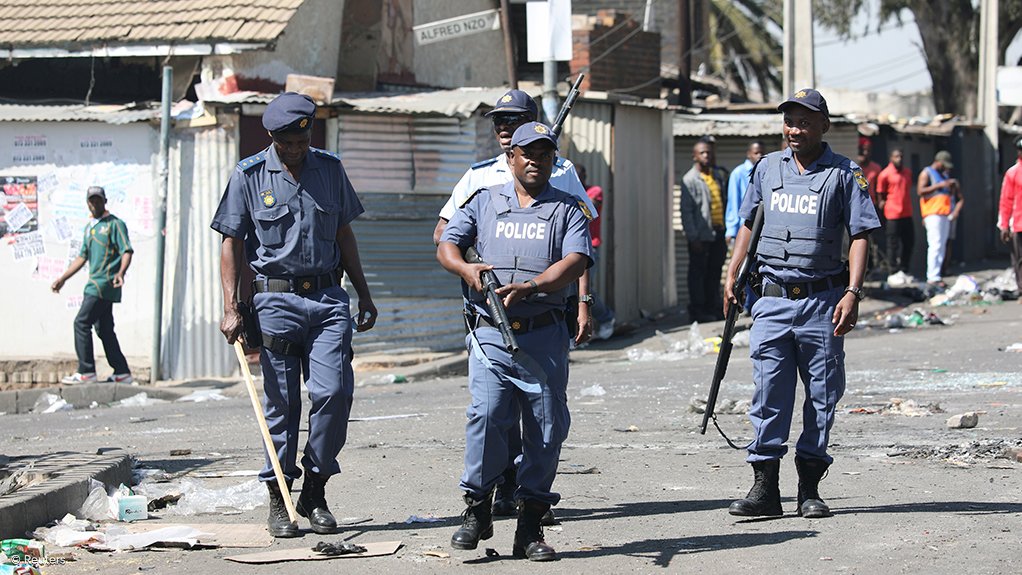A Western Cape High Court judgment against a woman trying to claim R2.7-million in damages for losing an eye after being hit by a rubber bullet sounds a warning to anyone caught up in a violent protest.
The woman said she was hit in the eye by a rubber bullet, while on her way to catch a bus to college in Grabouw, during protests which shook the fruit growers' town on 10 August 2011.
The woman said she had just left her shack and was about to cross the road, unaware of the protest, when she was hit in the eye. She said she had absolutely nothing to do with the protest, and the first she had known about it was when people started running.
A relative who was a police officer on the scene, had to radio in to arrange safe passage to get her to a clinic. She eventually lost her eye.
She subsequently sued the minister of police for damages on the grounds that the police had failed in their duty of care to her, and had not tried using softer strategies like tear gas and water cannons to disperse the protesters.
The matter was heard in September, with the court first dealing with the merits of her claim. If she proved that the police failed in their duty of care, she could proceed to the next phase – figuring out how much she would be entitled to in damages.
However, although the case is centred on the loss of her eye, Judge Judith Innes Cloete's summary of evidence shows how such claims might be handled in the future, based on the claimant's proximity to the protest at the time of her injury.
Cloete, in her discussion of the evidence presented to her, said that it was unlikely that the young student would have been unaware of the commotion before she set off for college.
"While I have sympathy for the plaintiff's plight – an innocent young woman trying to reach the bus stop to further her hard-fought-for education – I cannot overlook the fact that she also voluntarily assumed the risk of injury, whether at the hands of one or more of the protesters, or the SAPS members acting out of necessity," she said.
Cloete added: "For all these reasons, I am compelled to conclude that the plaintiff's claim must fail."
In the summary, Cloete heard that the police in Grabouw were completely outnumbered while they waited for the Public Order Police (POPs) to trundle over from Paarl to help control a protest. They were warned by an activist from the Grabouw Civic Association in a phone call to the police station at 03:15 that they were going to "burn Grabouw down".
Media reports at the time say the protest was about service delivery, but there were suggestions that political destabilisation of local authorities might also have been at play.
The duty officer testified that when he received this warning, he contacted the Public Order Police, but was told the unit was not on night shift, and so the Grabouw police would have to wait for the next shift to come on duty at 07:00.
The available Crime Prevention Unit in Grabouw arrived at the police station around 03:45 and started preparing as per their standing orders for protests. They arrived to a crowd of about 500 protesters who had blocked the road with fires, concrete blocks and tree stumps.
'The crowd was far from docile'
Police parked sideways across the road and called the activist to tell him the gathering was illegal and that they must leave, but they were ignored.
The officer in charge on the day said protesters were warned to disperse in English, Afrikaans and isiXhosa. These warnings are also intended to give notice to people not involved in the protest who are in the vicinity, to leave.
"The warning was ignored. It was repeated an hour or so later, at around 05:00, and again ignored. At 05:30, the [SA Police Service] members formed a line facing the crowd," said Cloete.
There were only 12 police officers, and people were going past the epicentre of the stand-off to get to work and school.
"Some of the protesters grabbed one of the passersby and assaulted him by kicking and punching him. Another passerby approached on his bicycle and was thrown off, assaulted in a similar fashion, and his bicycle shoved into one of the fires," said Cloete in her summary of evidence.
The commanding officer then ordered the police to advance on the crowd.
The officer testified that they were ducking bottles and stones thrown at them and were trying to protect not only each other, but also the community because of the earlier attacks on passersby.
The court said it was unlikely that the woman would not have noticed the commotion on approaching the protest.
"On the established facts and inherent probabilities, the crowd was far from docile as she claimed when she entered the area," said Cloete.
"While I accept that she would not willingly have proceeded to walk directly into the heart of the protest, on the probabilities, she passed at least alongside the protesters at a time when their assault on the SAPS members was well under way."
Cloete found that the police officers on the scene had acted out of necessity when they used rubber bullets before the POPs arrived with tear gas and water cannons.
EMAIL THIS ARTICLE SAVE THIS ARTICLE
To subscribe email subscriptions@creamermedia.co.za or click here
To advertise email advertising@creamermedia.co.za or click here











